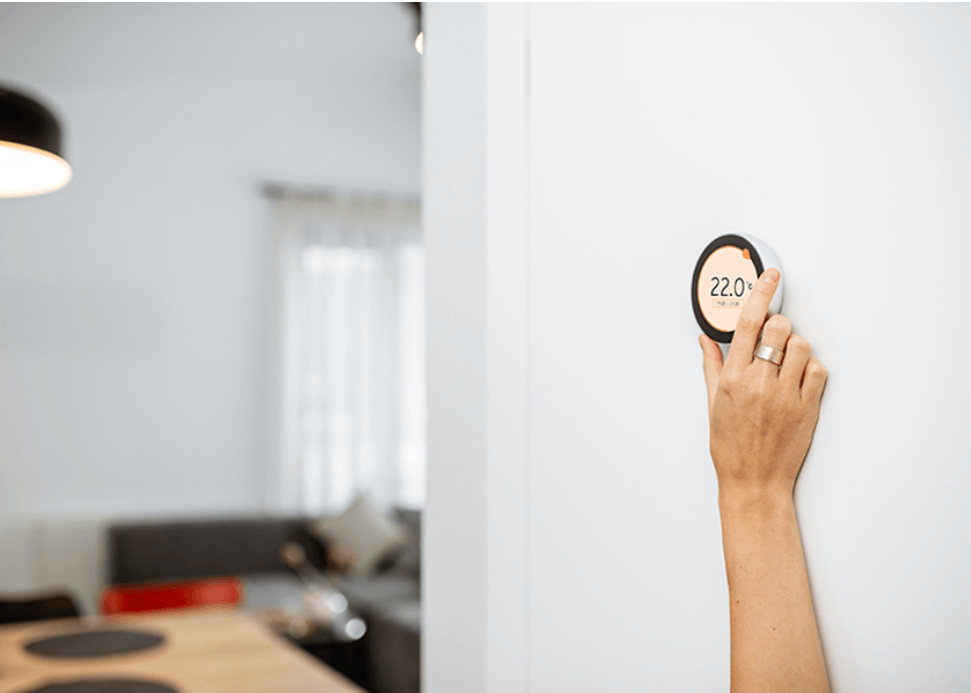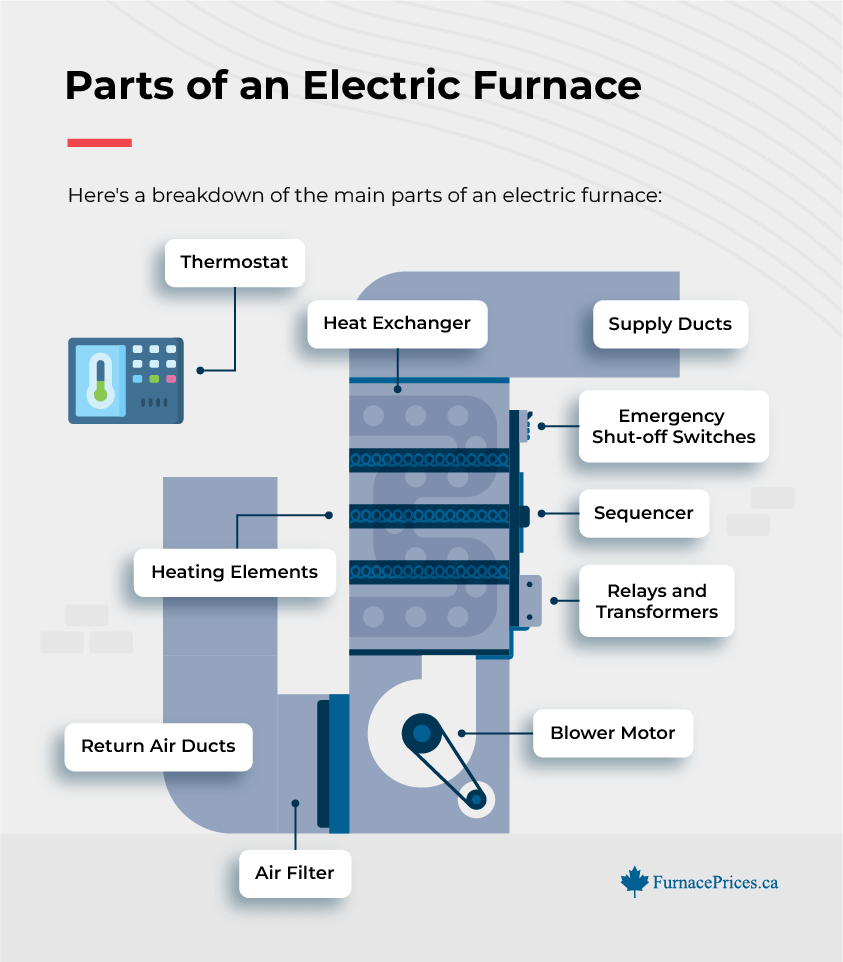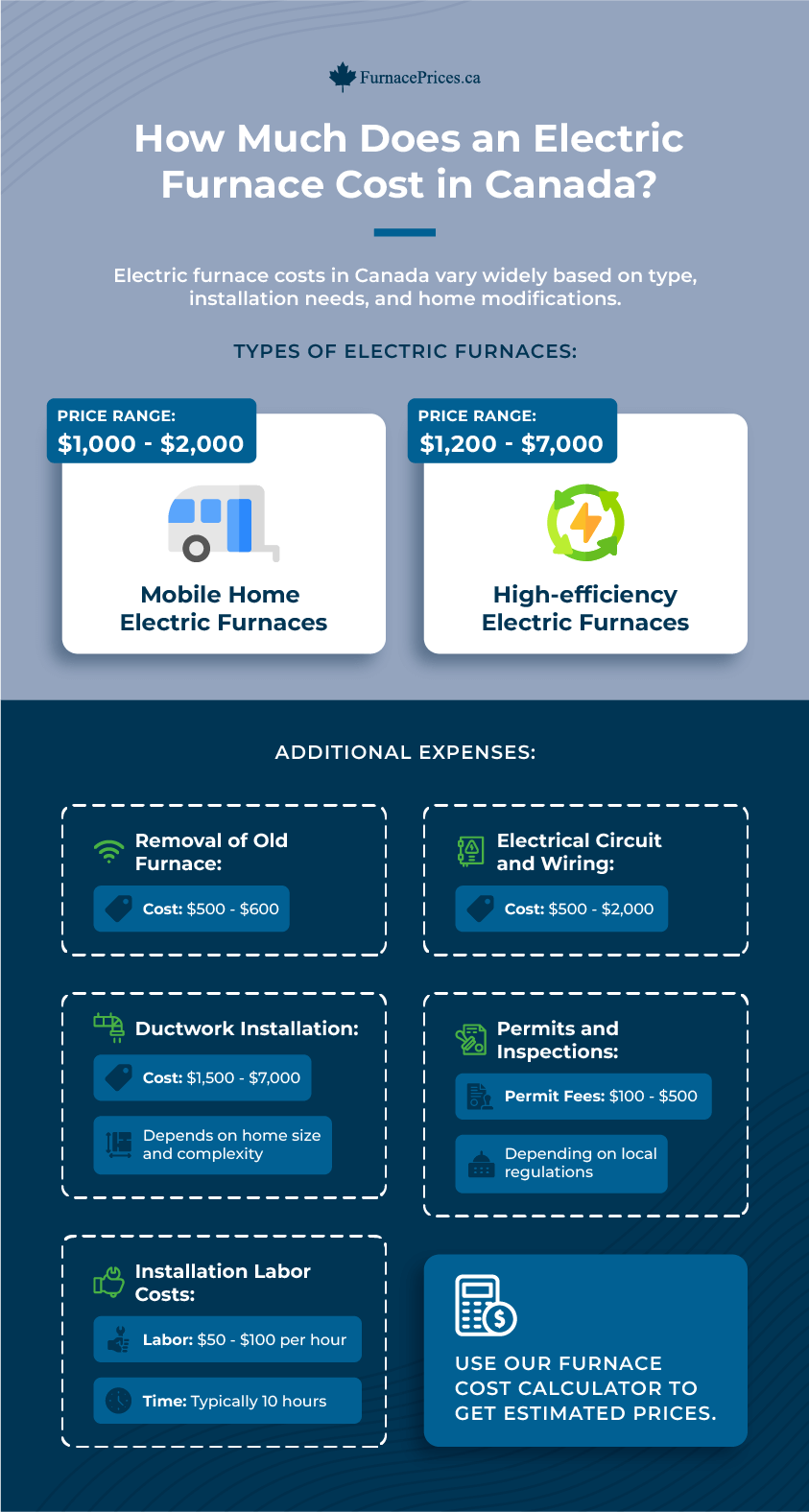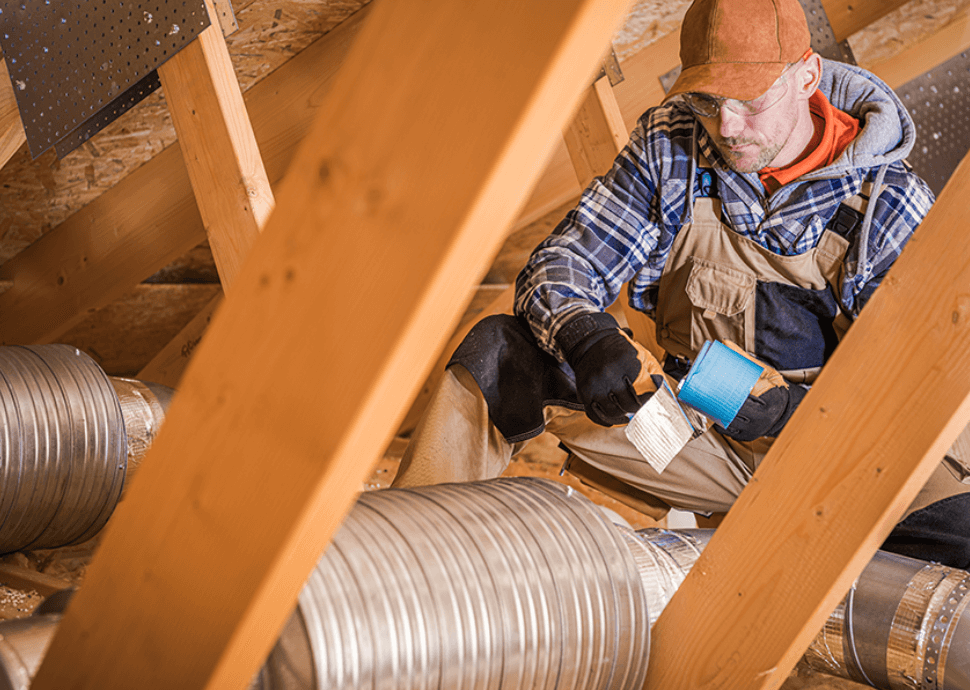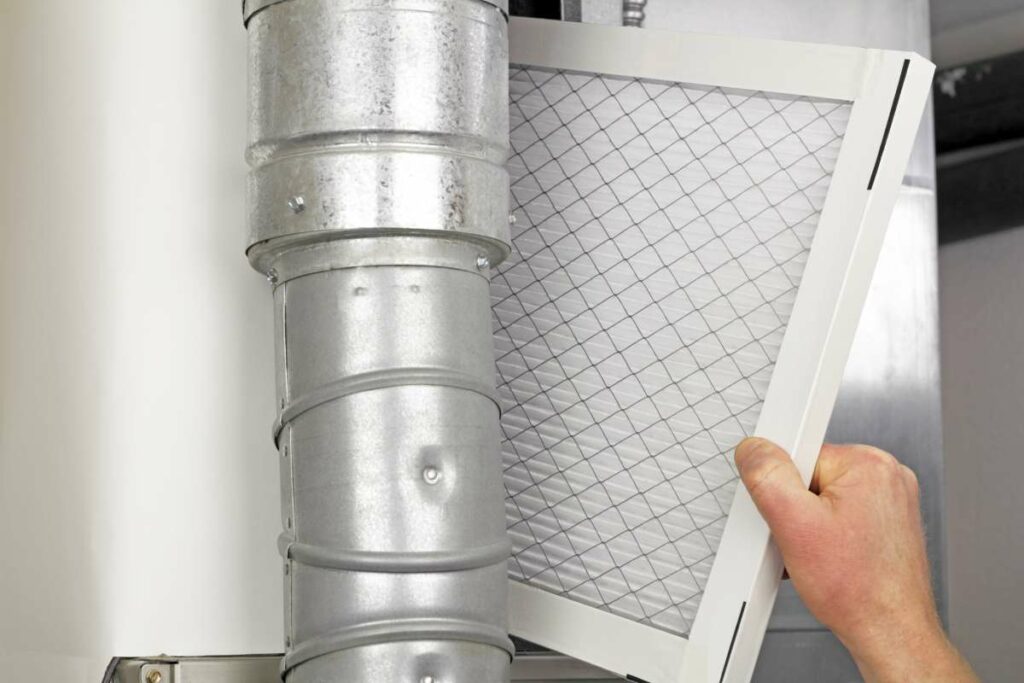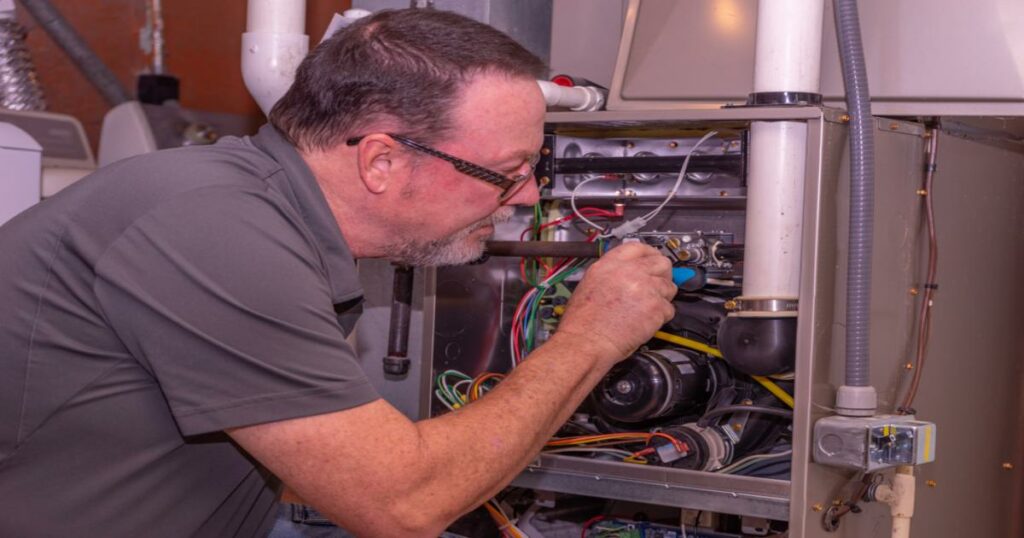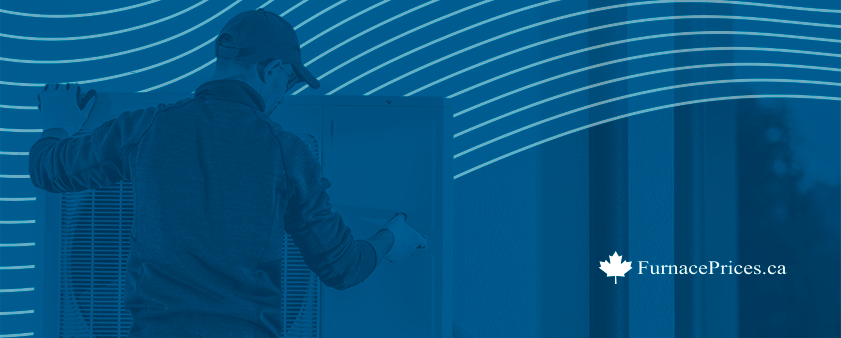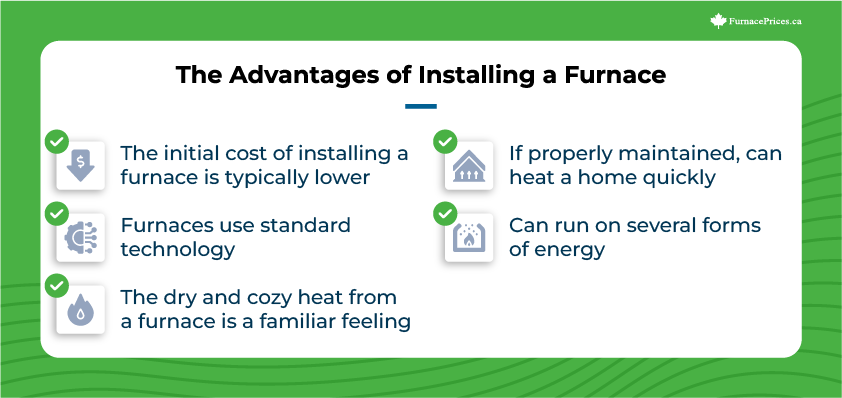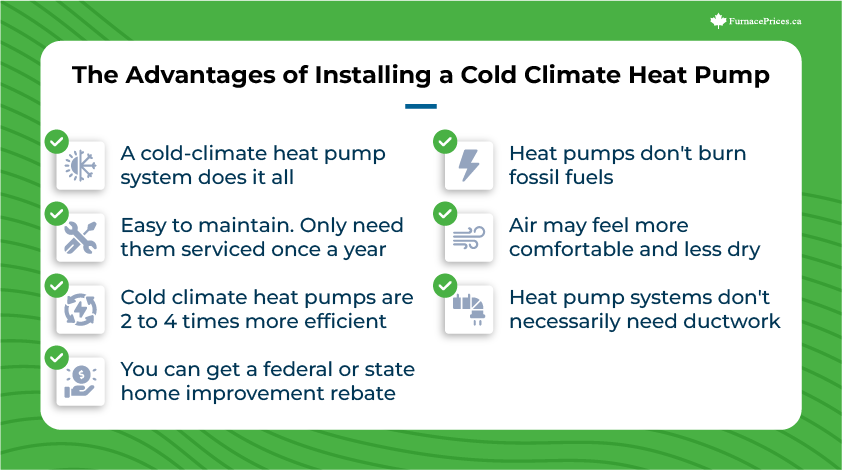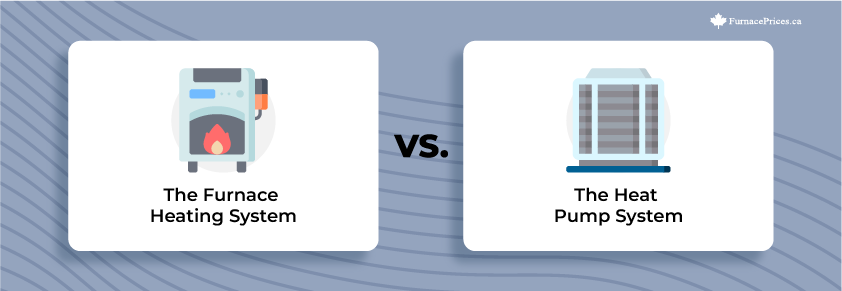Oil heating isn’t as common as it once was, mainly because natural gas is cheaper for many people. However, in Canada’s Northern Territories and in the Atlantic Canada maritime provinces, many homes still rely on oil furnaces to stay warm because natural gas isn’t an option everywhere.
This guide will cover everything you need to know about oil furnaces, including their advantages and disadvantages, how much they cost, what goes into installing one, and more.
What Is an Oil Furnace and How Does It Work?
An oil furnace is a device used to heat a home by burning heating oil using electricity to produce warmth. Although it’s been a traditional heating option for decades, most countries, including Canada, are phasing it out.
When your home gets too cold, a thermostat notices and signals the furnace to warm things up. The furnace then pumps oil from a tank to a burner, turning it into warm air or hot water, depending on your system (central forced-air system or hydronic heating system).
For homes with air systems, also known as central forced-air systems, a network of ducts spreads the heated air around your house.
If your home uses a water system, also known as hydronic heating, the oil furnace heats water that’s then moved to either baseboards or radiators to give off heat.
Sizing and Heating Capacity
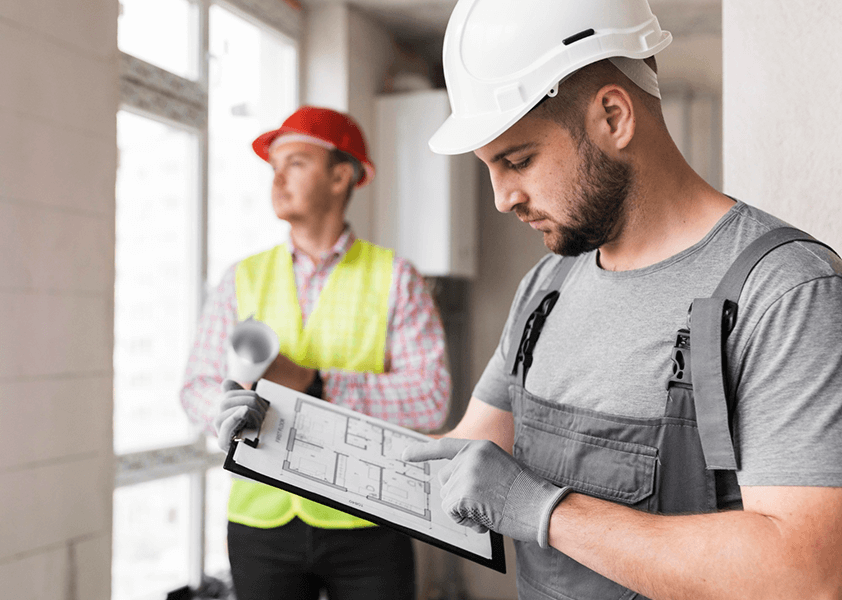
The size of the furnace you need depends on several factors, including the size of your home, its insulation quality, the climate you live in, and your personal heating preferences.
Here’s a simplified chart to show the relationship between home size and the required furnace capacity, measured in BTUs (British Thermal Units).
| Home Size (Square Feet) | Furnace Capacity (BTUs per hour) |
|---|---|
| Up to 1,500 | 45,000 - 60,000 |
| 1,500 - 2,500 | 60,000 - 90,000 |
| 2,500 - 3,500 | 90,000 - 120,000 |
| 3,500 - 4,500 | 120,000 - 150,000 |
| Over 4,500 | 150,000+ |
Oil Furnace Efficiency Ratings
Efficiency ratings for oil furnaces are measured by their Annual Fuel Utilization Efficiency (AFUE) percentage, which tells you how much fuel becomes heat for your home. Most new oil furnaces have between 84% and 90% AFUE ratings and don’t burn as efficiently as gas ones, ranging from the legal minimum to more efficient models up to 98% AFUE.
However, if you have an older furnace that hasn’t been well-maintained, its efficiency could drop to the 60s or even lower.
If you use 2,500 liters of heating oil over winter, at CAD 1.69 per liter, your total cost for heating oil would be CAD 4,225.
With an 85% efficiency rating, your effective heat usage is 2,125 liters (85% of 2,500 liters), and the cost for the heat actually used is approximately CAD 3,591.25. The rest, CAD 633.75, essentially pays for the system’s inefficiency.
Tip: Combine a heat pump with an oil furnace backup for an efficient heating solution. It provides adequate cooling and heating for most of the year, with the oil furnace kicking in for extra warmth during colder temperatures.
To know more, you can read our detailed guide on hybrid heating.
Get Quotes
How soon are you looking to buy?*



Oil Furnace Environmental Impact
While generally not emitting carbon monoxide into homes, oil furnaces contribute significantly to environmental pollution.
According to the Quebec government, oil heating systems produce around a million tonnes of CO2 annually, equivalent to the emissions from 300,000 cars. Besides CO2, these systems also emit nitrogen oxide, sulfur dioxide, and fine particles, which can harm health and the environment.
In response, Canadian provinces are taking action:
- Quebec has banned oil-powered heating in new construction projects as of December 31.
- Nova Scotia plans to ban oil-fired heating equipment in new buildings by 2025.
Other Canadian provinces still permit using oil furnaces but with specific conditions focusing on efficiency and emissions to minimize environmental impact.
Furthermore, due to the carbon tax, heating oil costs are likely to increase, making other heating sources like heat pumps more cost-effective, in addition to being better for the environment.
How Much Does an Oil Furnace Cost?
An oil furnace typically costs between $5,000 and $7,000, with some high-efficiency models reaching up to $10,000. For those considering a replacement, the average cost is similar to other furnace types and ranges from $3,500 to $6,000.
Here’s a table showcasing some of the best brands for oil furnaces and their costs:
| Brand | Unit Cost ($) | Total Cost with Replacement ($) |
|---|---|---|
| Armstrong | $2,400 – $7,300 | $3,400 – $10,300 |
| Carrier | $2,800 – $6,000 | $3,800 – $9,000 |
| Lennox | $3,200 – $6,500 | $4,200 – $9,500 |
| Rheem | $3,000 – $7,000 | $4,000 – $10,000 |
| Trane | $2,800 – $6,400 | $3,800 – $9,400 |
Additional Furnace Installation Costs
| Item | Cost Range |
|---|---|
| Old furnace removal | $150 – $400 |
| Permits and inspections | $40 – $300 |
| Ductwork | $15 – $40 per linear foot |
| HEPA filter | $450 – $2,500 |
| Asbestos inspection/testing | $250 – $700 |
| Humidifier | $700 – $1,050 |
| Thermostat | $50 – $300 |
| Variable-speed blower | $5,000 |
| Insulation | $3,000 – $7,000 |
Pros and Cons of Oil Furnaces
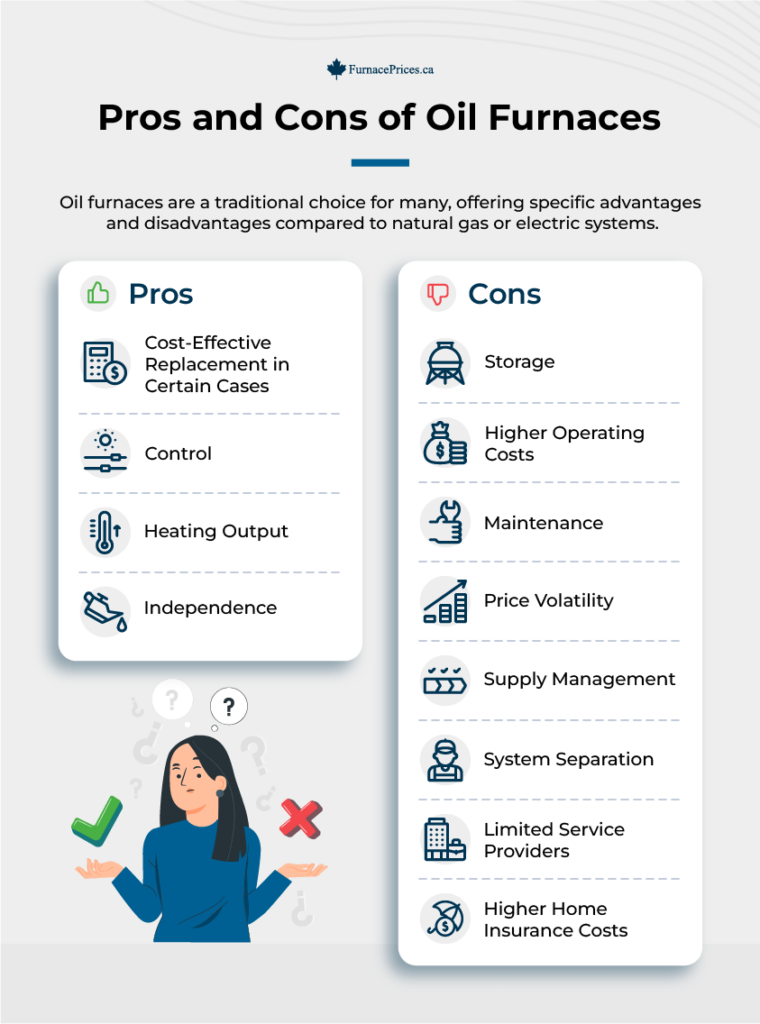
Oil furnaces are a traditional choice for many, offering specific advantages and disadvantages compared to natural gas or electric systems.
Pros
- Cost-Effective Replacement in Certain Cases: Replacing an old oil furnace may be more cost-effective initially than converting to gas or propane, but is likely to be more expensive in the long run.
- Control: Homeowners have complete control over their oil supply without reliance on utility companies.
- Heating Output: Some oil furnaces have higher BTU output.
- Independence: These systems don’t require pipeline infrastructure, offering flexibility in remote locations.
Cons
- Storage: Oil heating requires a storage tank, adding complexity and space requirements.
- Higher Operating Costs: Day-to-day running costs are higher than those for gas furnaces.
- Maintenance: Oil systems need frequent maintenance and cleaning due to soot and dirt.
- Price Volatility: Oil prices can fluctuate widely, similar to gasoline, affecting heating costs.
- Supply Management: Homeowners must monitor and replenish their oil supply.
- System Separation: Unlike integrated HVAC systems, oil heating and air conditioning systems are separate, potentially requiring services from different providers.
- Limited Service Providers: Fewer technicians specialize in oil furnace maintenance due to its decreasing popularity.
- Higher Home Insurance Costs: Many insurance companies may charge substantially higher premiums due to the perceived risk of having a large oil tank in your home.
Installation and Maintenance Tips
Here are some essential tips to keep your oil-powered heating system in top condition:
- Change Your Air Filter Regularly: Aim to replace the air filter at least twice yearly to maintain air quality and furnace efficiency.
- Inspect the Furnace Area: Before each heating season, check around your furnace. Ensure nothing is hitting it, and keep the area clear within a two-foot radius. Look for any buildup on the floor around your furnace. If you spot anything, avoid touching it and call an HVAC professional.
- Annual System Inspection: Have a professional inspect your system before the onset of cold weather to ensure it’s in good working condition.
- Keep Flammables Away: Keep clothing, boxes, newspapers, and other flammable materials away from the furnace. These items can easily catch fire and may also void any service agreements.
- Monitor Your Fuel Level: Regularly check your heating oil levels to avoid running out in the middle of winter. Ensuring you have enough fuel is critical, especially during peak cold periods. In an emergency, you can use kerosene or diesel to run your furnace (not recommended for long-term usage).
- Cleaning Your Furnace: For cleaning, first, turn off your furnace and let it cool down to avoid any burns. Then, use a vacuum with a hose attachment to remove dust and debris around the unit.
- Don’t Turn Off Furnace in Summer: Turning off your oil furnace in the summer is not recommended. Keeping it on prevents the system from seizing and remains ready for use when temperatures drop.
Oil Furnace Considerations
Here are key considerations tailored to homeowners looking to understand and possibly choose an oil furnace for their heating needs:
- Assess Your Space: Consider the size and insulation quality of your home. A larger, less insulated space will require a furnace with a higher BTU output for efficient heating.
- Operating Costs: Be aware that oil prices can be volatile, potentially leading to higher operating costs over time. Compare these costs with those of alternative heating options.
- Service Availability: Given the fewer service providers for oil furnaces, check the availability of qualified technicians in your area.
- Fuel Storage: Consider the logistics of oil storage, including tank size, location, and the need for regular refills. If propane is more readily available or cost-effective in your area, consider installing a gas conversion burner to easily switch your system from oil to propane or natural gas.
- Longevity and Upgrades: Think about the longevity of the system and the potential for future upgrades. As energy prices and technologies evolve, ensure your furnace can be efficiently operated or replaced.
- Regulations: Stay informed about local and national regulations regarding your area’s oil furnace installations, emissions, and potential bans or restrictions.
For more information: Complete Furnace Buying Guide
Oil Furnaces vs Other Furnaces

Let’s talk about how different types of furnaces stack up against oil furnaces and what factors you should consider when choosing.
Electric Furnace vs Oil Furnace
- Efficiency and Operating Costs: Electric furnaces are known for their high efficiency, often operating at 100% since all the electricity directly produces heat. However, that doesn’t mean they are cheaper. In fact, they are way more expensive to run than an oil furnace.
- Installation and Maintenance: Electric furnaces are generally cheaper and easier to install than oil furnaces, as they don’t require a fuel storage tank or a chimney for exhaust. Maintenance for electric furnaces is also typically more straightforward and less costly, with no need for fuel delivery or cleaning of combustion by-products.
- Environmental Impact: Electric furnaces produce no on-site emissions, making them a cleaner option environmentally.
- Durability and Lifespan: An electric furnace might offer a longer, less troubled service life due to its simplicity. However, an oil furnace can also be durable with diligent maintenance.
Propane Furnace vs Oil Furnace
- Efficiency and Operating Costs: Propane furnaces generally offer higher efficiency and cheaper operating costs than oil furnaces.
- Environmental Impact: Propane burns cleaner than oil, producing fewer emissions, such as carbon dioxide, sulfur dioxide, and particulates.
- Installation and Maintenance: Both propane and oil furnaces require a storage tank and regular fuel deliveries. However, propane tanks can be either above or below ground and are subject to stricter regulations because propane is a gas under pressure.
- Safety and Storage: Both fuels require safe storage, but propane, a gas at room temperature and pressure, poses different risks than liquid heating oil. Propane tanks are built to withstand pressure and are equipped with safety valves. Still, leaks can lead to explosive hazards if the gas is not handled properly. In the case of an oil furnace, an explosion is very unlikely.
Get Quotes
How soon are you looking to buy?*



Comparing Brands and Models
As the Government of Canada moves towards phasing out oil furnaces to encourage more environmentally friendly heating solutions, the availability of oil furnaces from major brands has become more limited.
However, several reputable brands still offer quality oil furnaces for those in need.
Armstrong
Armstrong offers a range of oil furnaces from $3,400 to $10,300, including installation. These units, featuring Variable Speed Blower and Single-Stage Performance, achieve a maximum efficiency of 85%.
Originating from the Lennox Furnace Company in 1928, Armstrong provides dependable options for homeowners seeking efficient heating solutions.
Carrier
Carrier’s oil furnaces are priced between $3,800 and $9,000 with installation. Known for their ultra-quiet operation, Carrier furnaces offer modulating and two-stage heating, achieving up to 87.5% AFUE. Some models are ENERGY STAR® certified.
Since its acquisition by United Technologies Corporation in 1979, Carrier has maintained its reputation for quality and innovation, though at a premium price point, reflecting its standing in the HVAC industry.
Lennox
With prices ranging from $4,200 to $9,500, including installation, Lennox positions itself as a premium brand in the oil furnace market.
Offering units with a maximum efficiency of 85%, Lennox caters to homeowners prioritizing advanced technology and efficiency in their heating solutions.
Lennox is a noteworthy option for those willing to invest in a higher-end heating system despite the higher cost.
Rheem
Rheem’s Classic Series oil furnaces, available for $4,000 to $10,000 with installation, offer up to 86.5% AFUE. Rheem, owned by The Paloma Group, is known for balancing cost and efficiency, providing several models to fit different heating needs.
While Rheem furnaces are lauded for their reliability, they represent a middle ground in the market, offering solid performance without leading the pack in innovation or advanced features.
Trane
Trane’s oil furnaces, including the 85 Single-Stage Variable Speed and the 80 Single-Stage models, are priced between $3,800 and $9,400, installation included.
As a brand acquired by Ingersoll Rand in 2008, Trane is recognized for manufacturing products in the USA, appealing to homeowners seeking American-made reliability.
Conclusion
With options from top brands like Armstrong, Carrier, Lennox, Rheem, and Trane, finding the furnace that aligns with your needs and budget is crucial.
As Canada’s go-to source for heating & air conditioning insights and quotes, we’re here to simplify your decision. We offer clear, no-obligation quotes to help you compare the best furnace tailored to your home.
Ready to find your ideal furnace? Get in touch for your free quote today.
